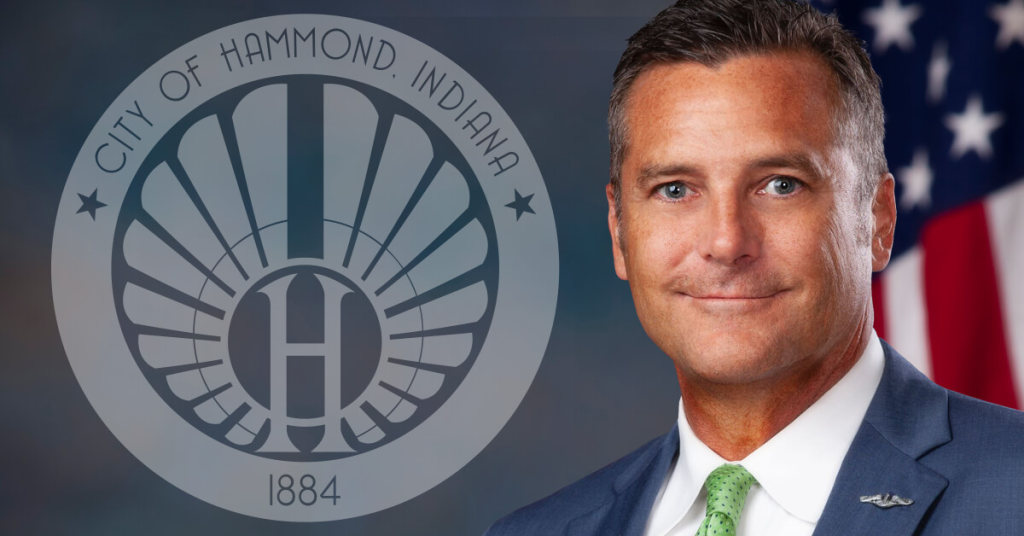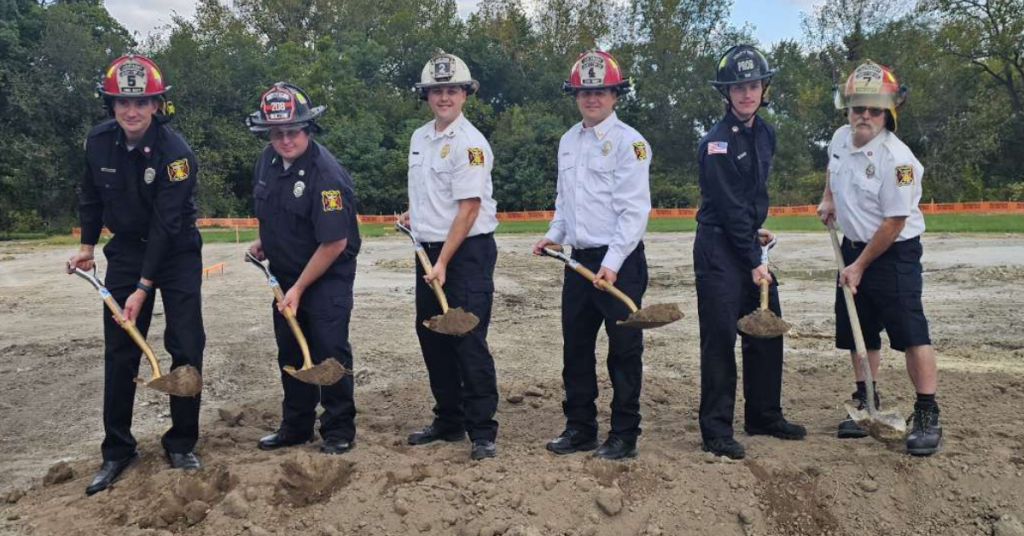Term-limited Gov. Eric Holcomb delivered his eighth and final State of the State to the General Assembly on Tuesday, detailing the accomplishments of his administration and previewing milestones yet-to-come.
“A year ago, I promised you that I would work harder than ever, to continue to improve the prospects for every person that calls Indiana home. Today, I renew to you that same promise until the ultimate conclusion of my assigned duty,” he said.
Holcomb had one surprise in the 30-minute speech: a $250 million grant from the Lilly Endowment to address blight and redevelopment around the state in addition to cultivating arts and cultural initiatives. The funds will be granted to regions through the READI program, which is already distributing $500 million in economic development grants in a second round of funding.
Clay Robbins, the chairman and CEO of the Lilly Endowment, highlighted the multitude of efforts funded by the organization, including United Way, regional initiatives and gifts to all of Indiana’s colleges and universities.
“Given the success and momentum of READI and the state’s continued investment in READI 2.0., the endowment considered this grant proposal as a compelling opportunity to build on its efforts to help promote the prosperity of Indiana communities,” Robbins said in a statement.
Holcomb’s speech
He called the state’s efforts to create generational change “the Indiana model,” saying it was a team effort to move the state forward on various initiatives.
“The Indiana model seeks excellence, rejecting any notion that a Midwestern ‘vowel state’ would be content with mediocrity — and instead takes giant leaps, rather than baby steps” Holcomb said.
Examples included the Governor’s Public Health Commission, which proved instrumental in the push to increase the state’s share of funding at local public health departments, as well as economic development moves to attract federal partnerships in clean hydrogen, micro-electronics and biotech manufacturing.
Other milestones included the $28.7 billion in committed capital investment the Indiana Economic Development secured in 2023 — the same amount the state attracted between 2005 and 2016 combined.
“That’s called ‘Indiana momentum,’ and we’ve got a lot more coming,” he said.
Holcomb welcomed guests from the Consul General of Israel and Consul General of Japan, sparing a moment to recognize the recent earthquakes in Japan and ongoing siege in Palestine.
“We continue to pray for the safety and security to all of those who call the Holy Land home, and for the prospect of lasting peace,” Holcomb said.
Additional highlights touched on salary increases for both teachers and Indiana State Police personnel as well as Indiana’s personal income tax cuts, which dropped to 3.05% and will continue to fall to 2.9% — tied with the lowest personal income tax rates in the country.
Infrastructure, which has long been a focus for his administration, will get its own headlines when I-69 finally connects Indianapolis and Evansville and crews finish building double tracks for the South Shore Line in northern Indiana.
But Holcomb’s speech wasn’t without its goals, including a list of “musts” for the upcoming year, based largely on his 2024 agenda:
- Improving third-grade reading policies
- Requiring computer science classes for high school graduation
- Making college more accessible by creating three-year and associate degree options
- Growing the state’s beleaguered child care workforce
- Updating the State Disaster Relief Fund to ease community access and
- Building awareness of current government services, such as One Stop to Start
Holcomb, a U.S. Navy veteran, shared a quote from Grace Hopper, one of the first female admirals in the Navy, saying “A ship in port is safe, but that is not what ships are built for.”
“My administration will not be a ship in port,” Holcomb promised the assembled lawmakers. “Instead, we will deploy on multiple fronts until my last day and hour as your governor.”
Democrats, Republicans respond
Democrats panned portions of Holcomb’s speech, with a focus on where the state still fell short.
“A glaring oversight was (the lack of) access to health care in Indiana,” said Sen. Shelli Yoder, D-Bloomington. “The number of maternity wards that are closing … rural hospitals that have closed — this is an issue.”
She noted that since the state enacted a near-total abortion ban, pregnant people now have to travel to access reproductive health care. Additionally, the state still taxes menstrual products — a prohibitively expensive medical necessity that prevents some girls from attending school — even when it doesn’t tax “Twix bars or marshmallow fluff.”
The economic development Holcomb boasted about comes with a commitment to create high-wage jobs but the state’s average wage continues to lag behind the rest of the nation. With so few Hoosiers completing advanced degrees, Sen. Greg Taylor expressed skepticism that Indiana residents would benefit from the jobs and wondered if it was an attempt to attract skilled out-of-state workers.
The continued Republican focus on the state’s AAA credit rating is misleading, Taylor said, adding that other, Democratic-leaning states had achieved that while also investing in government programs that aided their residents.
“They also said, ‘We want to make sure that the citizens of our state have a good credit rating (and) we’re going to increase wages. And we’re going to say that the minimum wage no longer needs to be $7.25 an hour,” Taylor, D-Indianapolis, said. “We have yet to do that in Indiana.”
Additionally, several of the initiatives touted by Holcomb, Taylor said, were actually federal programs, including broadband and economic development in advanced manufacturing.
Both did highlight some important steps, including moves to make child care more affordable, but said direct state investment was needed to increase access and wages.
But Sen. Pro Tem Rodric Bray, R-Martinsville, said his caucus wasn’t interested in subsidizing child care to that degree.
“One of the biggest challenges we have with child care is the cost of child care. If you raise wages to those employees, you’re going to raise the cost of child care,” Bray said.
In terms of literacy, both House Speaker Todd Huston and Bray noted caucus priorities that aligned with Holcomb, though Bray emphasized that they would focus less on retention and more on adding supports for struggling readers.
Huston, R-Fishers, said he saw arguments about the cost impacts on schools as “ridiculous,” because the children who couldn’t read should be the focus. Children who are promoted to the next grade without meeting reading milestones will struggle, he said.
“The goal is not to retain a single student … (but) we know as a society the challenges that child will face long term,” Huston said.
Caption: Gov. Eric Holcomb pauses during his final State of the State Address on Jan. 9 in the Indiana Statehouse. (Monroe Bush for the Indiana Capital Chronicle)
This story originally was posted by the Indiana Capital Chronicle, which is part of States Newsroom, a network of news bureaus supported by grants and a coalition of donors as a 501c(3) public charity. Indiana Capital Chronicle maintains editorial independence. Follow Indiana Capital Chronicle on Facebook and Twitter.




